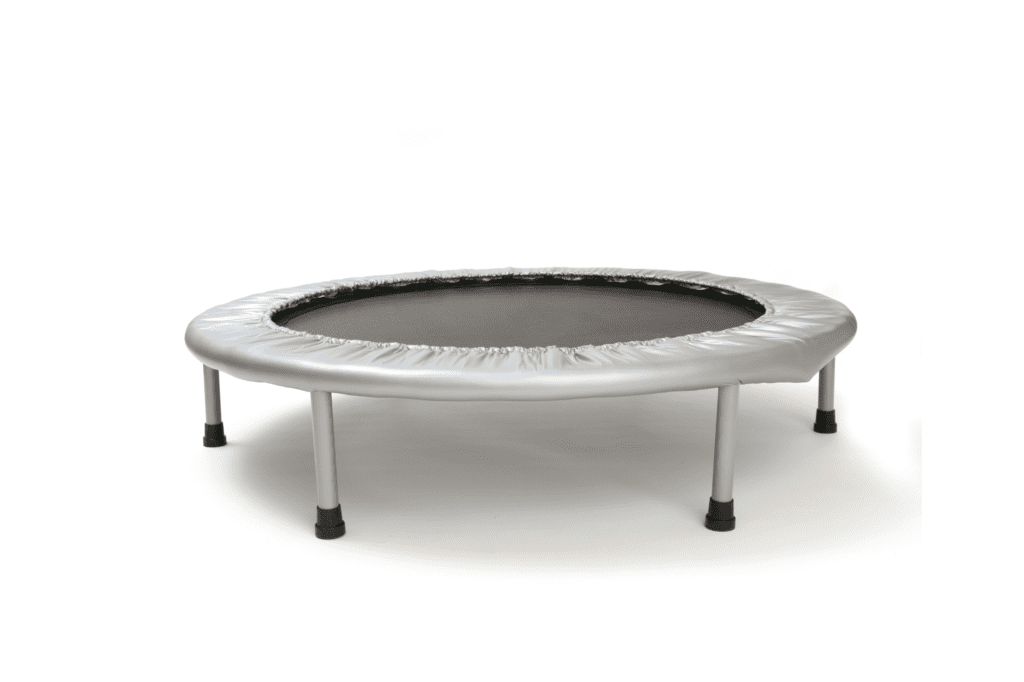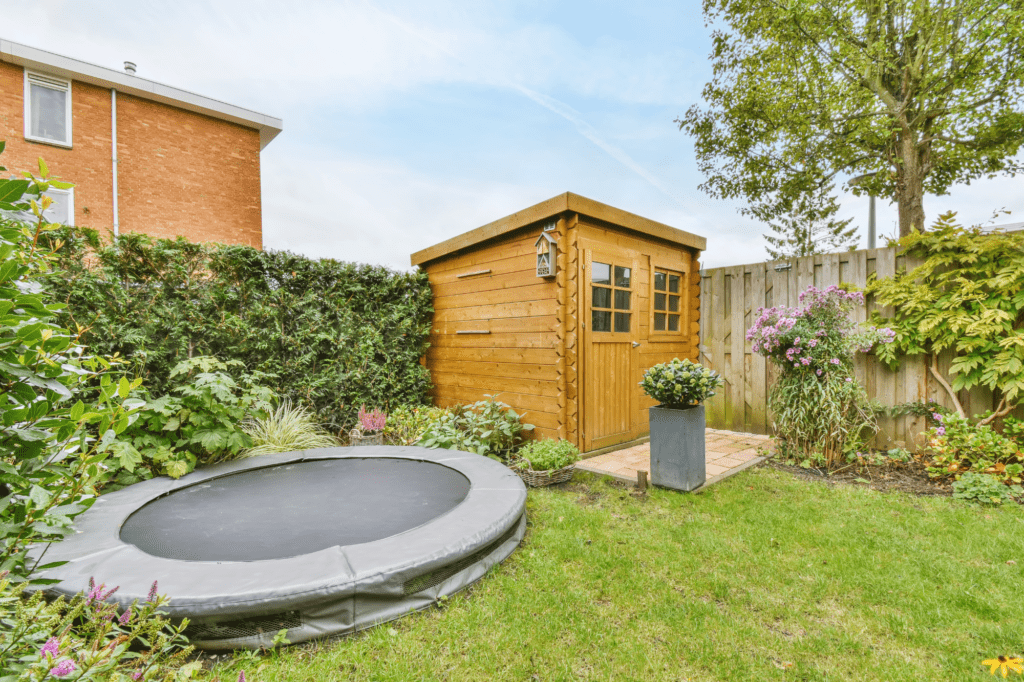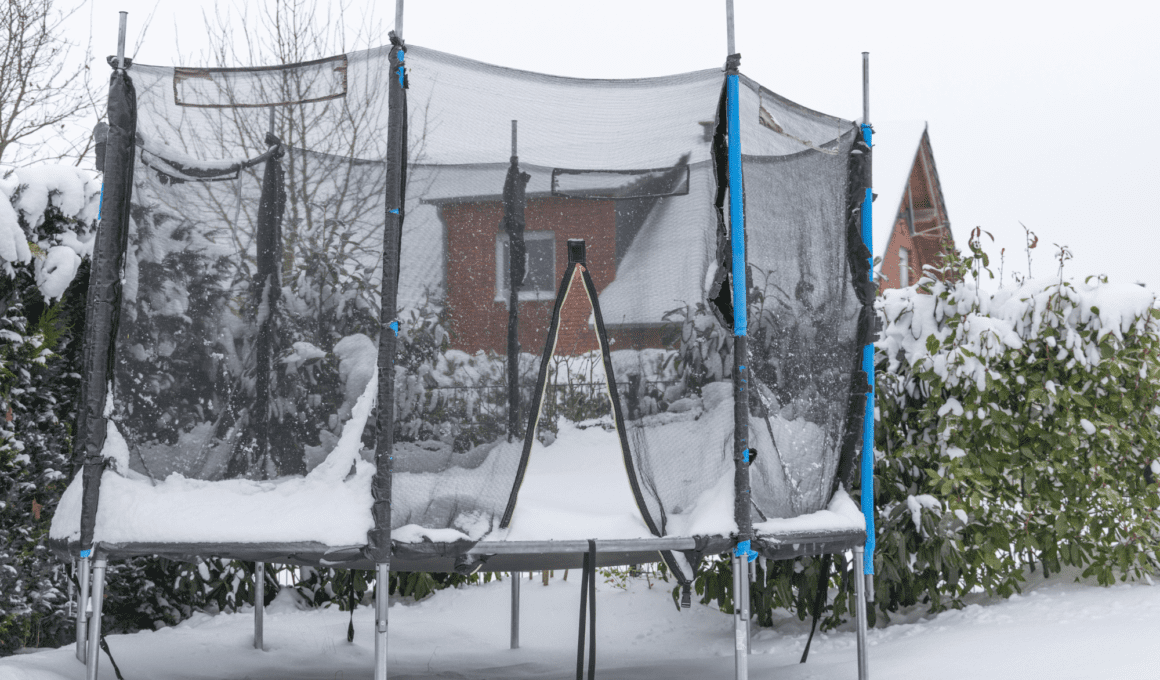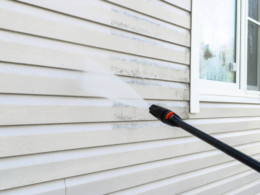Quick Summary
- Properly disassemble the trampoline and store small parts and accessories safely
- Clean and dry the trampoline thoroughly before storage to prevent moisture damage
- Remove the safety net and pads and store them separately
- Find a suitable storage space that is protected from snow, ice, and wind, and use a weather-resistant cover for extra protection.
Disassemble the Trampoline
Now, you should begin to disassemble the trampoline by carefully removing the springs and detaching the frame. Safety is key when it comes to disassembling your trampoline for winter storage. Start by locating the spring hook tool, which will make the disassembling process easier and safer. Using this tool, carefully remove each spring, taking care not to let them snap back into place. It’s crucial to wear protective gloves to avoid any injuries during this process. Once all the springs are removed, detach the frame from the legs. This step may require some strength, so be cautious and use your muscles properly. Once the frame is detached, you can begin to break it down into smaller pieces for easier storage. Make sure to keep all the screws and bolts in a safe place, as you’ll need them when reassembling the trampoline in the spring.
When it comes to trampoline storage options, you have a few choices. You can either store it indoors, such as in a garage or basement, or outdoors using a trampoline cover. Storing it indoors provides additional protection from the harsh winter elements, while a trampoline cover can help shield it from snow and ice. Whichever option you choose, make sure to store the trampoline in a dry and secure location to prevent any damage.
Disassembling your trampoline for winter storage is a crucial step to ensure its longevity. Remember to follow proper safety measures, such as wearing gloves and using the spring hook tool. Consider your storage options, whether it’s indoors or with a trampoline cover, to protect it from the winter weather. By taking these steps, you can ensure that your trampoline will be ready for springtime fun.
Once all the springs are removed, detach the frame from the legs. This step may require some strength, so be cautious and use your muscles properly. Once the frame is detached, you can begin to break it down into smaller pieces for easier storage. Make sure to keep all the screws and bolts in a safe place, as you’ll need them when reassembling the trampoline in the spring.
When it comes to trampoline storage options, you have a few choices. You can either store it indoors, such as in a garage or basement, or outdoors using a trampoline cover. Storing it indoors provides additional protection from the harsh winter elements, while a trampoline cover can help shield it from snow and ice. Whichever option you choose, make sure to store the trampoline in a dry and secure location to prevent any damage.
Disassembling your trampoline for winter storage is a crucial step to ensure its longevity. Remember to follow proper safety measures, such as wearing gloves and using the spring hook tool. Consider your storage options, whether it’s indoors or with a trampoline cover, to protect it from the winter weather. By taking these steps, you can ensure that your trampoline will be ready for springtime fun.
Clean and Dry the Trampoline
First, make sure to thoroughly clean and dry your trampoline to prevent any damage during the winter months. Cleaning your trampoline is important because it removes dirt, leaves, and other debris that can cause rust and deterioration over time. Start by sweeping off any loose debris with a broom or brush. Next, use a mild soap and water solution to clean the surface of the trampoline. Gently scrub the mat and frame with a soft brush or sponge, paying special attention to any areas where dirt or grime has accumulated. Rinse the trampoline thoroughly with clean water and allow it to air dry completely before storing. To prevent rust, it’s important to take extra care of the trampoline springs. After cleaning and drying the trampoline, inspect the springs for any signs of rust or damage. If you notice any issues, replace the affected springs before storing. To protect the springs during storage, consider applying a light coat of lubricant to prevent rust and keep them in good condition. Additionally, you can use a trampoline cover or tarp to shield the entire trampoline from moisture and harsh weather conditions. By following these steps and taking proper care of your trampoline, you can ensure it stays in good condition throughout the winter months. Remember, a clean and dry trampoline is essential for preventing rust and maintaining its longevity.Remove the Safety Net and Pads
To keep yourself and your loved ones safe, it’s time to remove the safety net and pads from your trampoline. Follow these steps to ensure a smooth process:- First, carefully remove the safety net by unhooking it from the metal poles. Start from one side and work your way around, taking your time to avoid any accidents.
- Once the net is off, move on to the pads. Start by unfastening the straps that hold them in place. Gently lift the pads off the trampoline, being careful not to damage them.
- After removing the pads, give them a thorough inspection. Look for any signs of wear and tear, and if necessary, make note of any repairs that need to be done before storing them.
- Now that everything is removed, it’s time to find a suitable storage space. Look for a dry area, preferably indoors, where the net and pads can be kept safe from the elements.
- Make sure the storage space is free from moisture and pests, as these can cause damage to the net and pads over time.
- Finally, neatly fold the net and pads and place them in a storage bag or container to keep them organized and protected until next season.
Find a Suitable Storage Space
When it comes to finding a safe place to store your trampoline accessories during the winter months, it’s important to consider a dry and pest-free location. Finding a storage solution that meets these criteria is crucial to ensure the longevity of your trampoline. Firstly, you need to find a suitable storage space. Look for a spot that is protected from rain, snow, and other harsh weather conditions. A garage or shed would be ideal if available. Make sure the area is well-ventilated to prevent moisture buildup, which can lead to rust and damage.
Next, prepare the storage space before placing your trampoline accessories inside. Clean the area thoroughly, removing any debris or potential pests. Sweep the floor and wipe down any surfaces. Consider using pest control measures such as traps or repellents to keep unwanted critters away.
Once the storage space is ready, carefully place your trampoline accessories inside. Make sure they are organized and properly protected. Cover them with a tarp or plastic sheet to prevent dust and moisture from getting in. If you have smaller accessories, like springs or bolts, consider storing them in a labeled container to keep them organized and easy to find next season.
By finding a suitable storage solution and preparing the storage space accordingly, you can ensure your trampoline accessories stay in good condition throughout the winter months. Remember, taking the time to store them properly will save you time and money in the long run. Stay safe and enjoy your trampoline for years to come!
Firstly, you need to find a suitable storage space. Look for a spot that is protected from rain, snow, and other harsh weather conditions. A garage or shed would be ideal if available. Make sure the area is well-ventilated to prevent moisture buildup, which can lead to rust and damage.
Next, prepare the storage space before placing your trampoline accessories inside. Clean the area thoroughly, removing any debris or potential pests. Sweep the floor and wipe down any surfaces. Consider using pest control measures such as traps or repellents to keep unwanted critters away.
Once the storage space is ready, carefully place your trampoline accessories inside. Make sure they are organized and properly protected. Cover them with a tarp or plastic sheet to prevent dust and moisture from getting in. If you have smaller accessories, like springs or bolts, consider storing them in a labeled container to keep them organized and easy to find next season.
By finding a suitable storage solution and preparing the storage space accordingly, you can ensure your trampoline accessories stay in good condition throughout the winter months. Remember, taking the time to store them properly will save you time and money in the long run. Stay safe and enjoy your trampoline for years to come!
Cover and Protect the Trampoline
Once the colder months arrive, you’ll want to ensure your beloved trampoline is shielded from the elements with a durable cover to maintain its longevity and prevent any damage. There are several trampoline cover options available to protect your trampoline during winter. Here are some winter weather protection tips to keep in mind when covering and protecting your trampoline:- Choose a cover made of high-quality, weather-resistant material that can withstand harsh winter conditions. Look for covers that are UV-resistant, waterproof, and have reinforced stitching for added durability.
- Before covering your trampoline, make sure it is clean and dry to prevent mold and mildew growth. Remove any leaves, debris, or snow that may have accumulated on the trampoline.
- Secure the cover properly to prevent it from blowing away in strong winds. Some covers come with straps or hooks that can be attached to the trampoline frame for added stability.
- Regularly inspect the cover throughout the winter to ensure it is still in good condition and properly protecting your trampoline. Repair or replace any damaged parts as necessary.
Are There Any Similarities in Storing Compost and Storing a Trampoline in the Winter?
During winter, those who are passionate about gardening may wonder if there are any similarities between storing compost in winter and storing a trampoline. While seemingly unrelated, both processes involve proper care and protection. Storing compost in winter requires providing insulation to prevent freezing, while storing a trampoline involves disassembling it and finding a sheltered spot to avoid damage from snow and harsh weather. Ultimately, both tasks emphasize the importance of safeguarding valuable items during the winter season.









